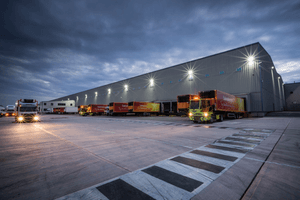This article is from the Australian Property Journal archive
LOCAL co-working space majors Hub Australia and WOTSO are backing hybrid work arrangements, striking an alliance that will see their respective CBD and suburban-focused offerings open to the rivals’ combined 7,000 members.
A pilot program will run for six months and provide more than 25 flexible workspaces across the country.
Hub Australia’s Business Impact and Economic Survey in December found that 44% of members wanted closer to home locations, while a further 46% said they planned to attend the office for collaboration and 51% would attend a CBD office for regular business.
“We firmly believe hybrid workstyles are a permanent demand beyond the pandemic and many will spend their week working from multiple locations,” Hub Australia CEO and founder Brad Krauskopf said.
“Our corporate and enterprise customers recognise that they need to embrace flexible workspaces to attract and retain talented staff – we believe that offering them a network of workspaces nationally will help them achieve this.”
Hub Australia and WOTSO’s partnership will also see data sharing between the two companies for analysis of where members work during the trial.
“This program will help us develop measurable data on how people want to use flexible workspace and how their working routines have changed,” Krauskopf said.
CBD office occupancy rose from 50% to 59% during April, according to Property Council data, while Melbourne continued its slow increase, up from 35% to 41% during the month.
“We still expect to see large numbers of members capitalise on the amenity that CBD locations provide, but there’s no doubt some of our members will relish the opportunity to work from WOTSO sites in their local areas such as Manly or the Sunshine Coast,” Krauskopf said.
Hub Australia offers workspaces across Sydney, Melbourne, Brisbane, Canberra and Adelaide. WOTSO has invested in the suburbs since 2014 and remains one of the only suburban and regional coworking offerings in the country. In recent weeks it announced the addition of three flexible workspaces to its investment portfolio, with sites in Newcastle and Brookvale currently scheduled to launch at the start of the new financial year adding to its suburban and regional workspaces across Queensland, New South Wales, Australia Capital Territory, South Australia, and Tasmania.
Joint managing director of WOTSO, Jessie Glew said a shift in work trends has meant people are looking for options to spend more time working closer to home.
“Our partnership with Hub Australia means we are able to expand on a fully flexible model that supports businesses and offers workers the ultimate combination of days in the CBD along with days near home.”
The initial phase of the hybrid work pilot is ongoing until the end of July. Members of each company can access any Hub Australia and WOTSO space using complimentary day pass access.
Investors in co-working space have been advised by research house Morningstar to stick with the sector. The financial services firm expects co-working office space internationally to increase from around 360 million sq ft to about 2.5 billion sq ft by from 2018 to 2028, which would represent an increase from around 2.5% of occupied office space globally to around 15%
Flexible space the “safest option”
After a year of existential crisis for the office sector, the rebound for flexible space will only take seven months as it is the “safest option” for risk-wary companies, according to Office Hub.
The flexible workspace marketplace is bullish about the recovery, with the rebound’s “only hurdle being how many tours an account manager can realistically do in a day”, despite record occupancy levels and desk rates at the end of 2019 collapsing during the pandemic.
“One little jab will be the turning point when the world comes back to work and WFH becomes only for the few that choose lifestyle over community and collaboration,” CEO and founder Grant Philipp said.
Office Hub expects second and third waves of COVID will keep global flexible space industry occupancy at around 20 to 40% capacity early in 2021. Phillip said Australia and New Zealand will lead the recovery and “all indicators suggest it will be a race not a marathon”.
“The early adopters who choose to come back to work will be the winners as they lock in space at a fraction of the cost, pre-COVID. However, once occupancy passes 60%, economic equilibrium will prevail and bargain hunting will be a thing of the past.”





